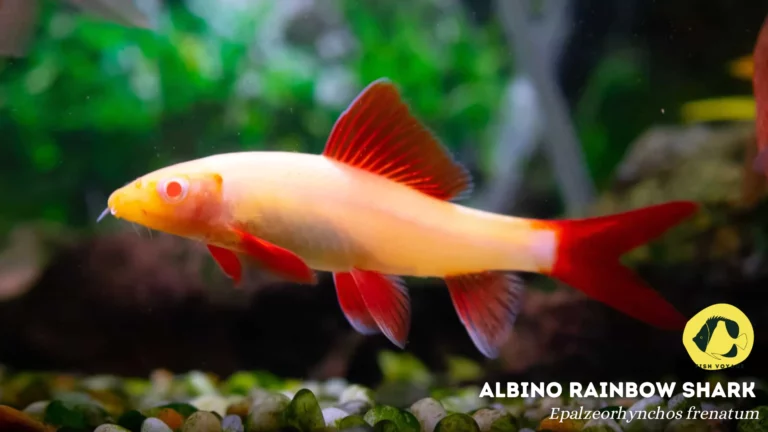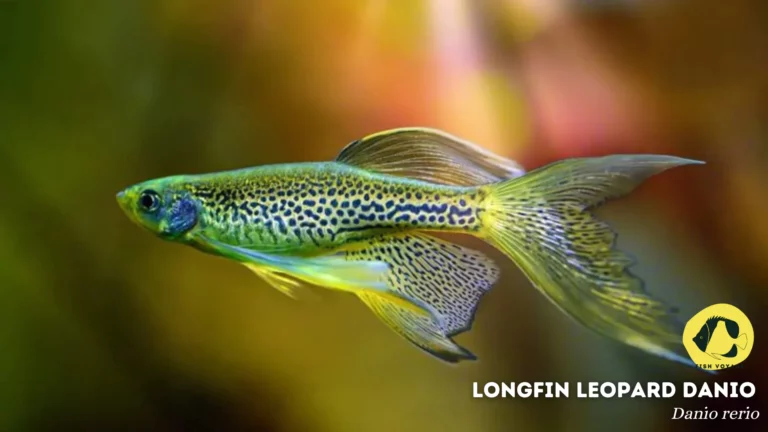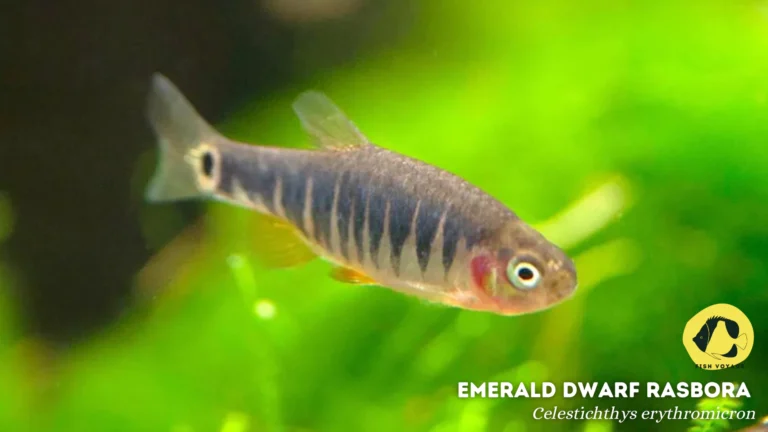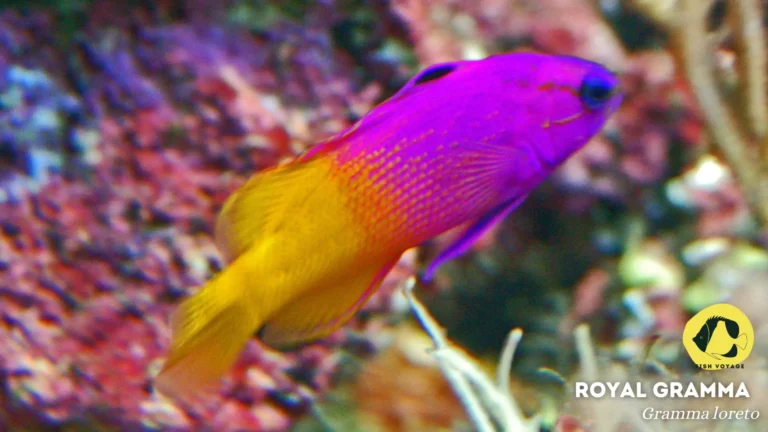The Ultimate Guide to Royal Gramma Tank Mates
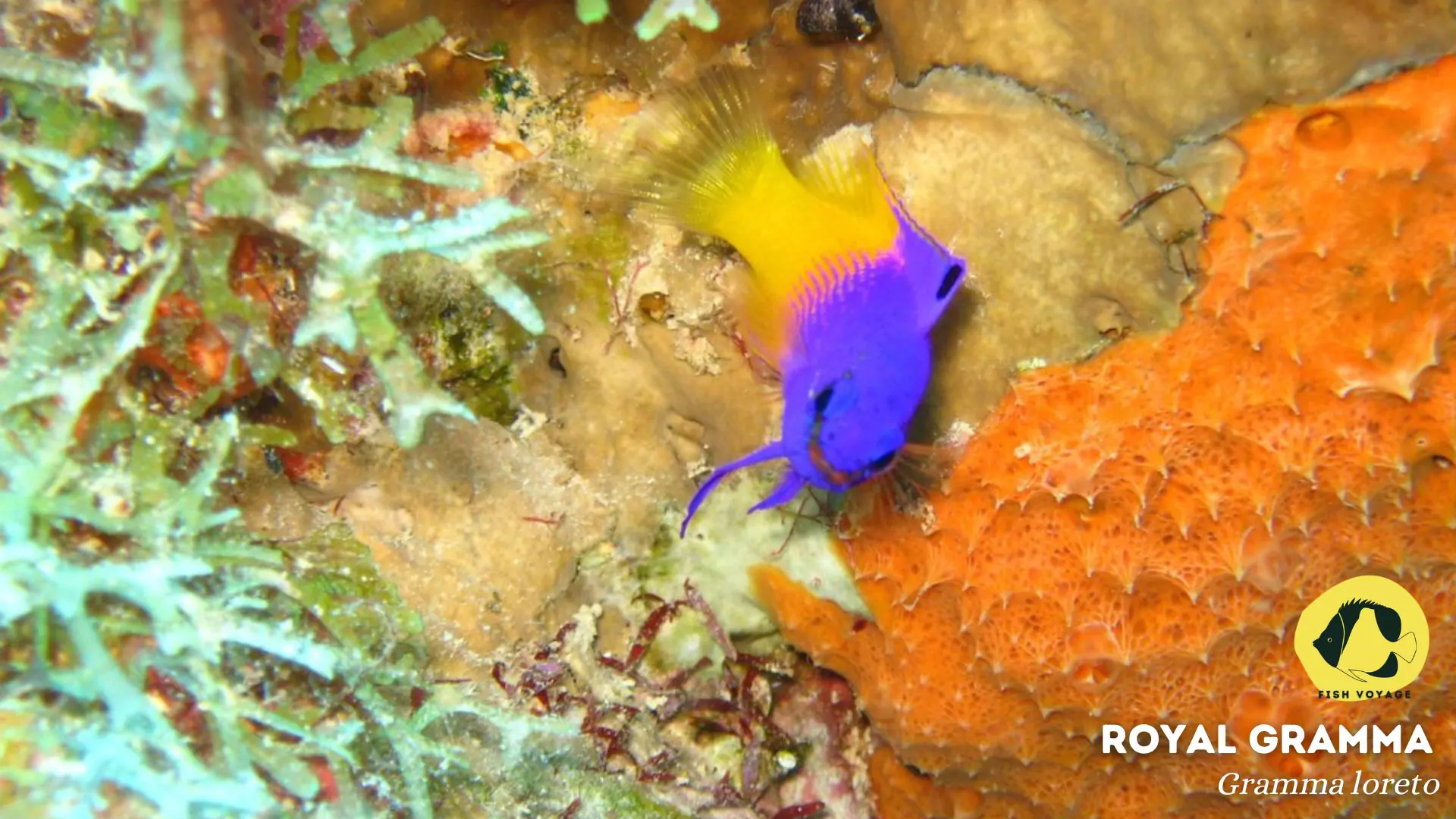
Welcome to our comprehensive guide on selecting suitable tank mates for the Royal Gramma fish (Gramma loreto). Renowned for its vibrant colors and tranquil demeanor, the Royal Gramma is a beloved addition to many saltwater aquariums. However, ensuring the harmonious cohabitation of these mesmerizing creatures requires careful consideration when choosing their tank mates.
This blog post aims to provide invaluable insights and recommendations to aquarists seeking to create a thriving aquatic community centered around Royal Grammas. By understanding the unique characteristics of these fish and selecting compatible companions, enthusiasts can foster a balanced and peaceful ecosystem within their aquariums. Join us as we delve into the fascinating world of Royal Gramma tank mates, offering expert guidance for a rewarding and fulfilling aquarium experience.
Understanding Royal Grammas
Royal Grammas’ Physical Appearance and Behavior
- Physical Appearance: Royal Grammas, scientifically known as Gramma loreto, boast vibrant colors and striking markings, with a purple to violet front half and a yellow to golden rear half. They have a characteristic black spot near the dorsal fin. Their elongated bodies feature two distinct dorsal fins, adding to their unique appearance.
- Behavior: Royal Grammas are relatively peaceful and make excellent additions to community aquariums. They tend to stay close to rocky structures or caves, darting in and out of hiding places. While they may display some territorial behavior, especially towards similar-looking fish, they generally coexist well with other species.
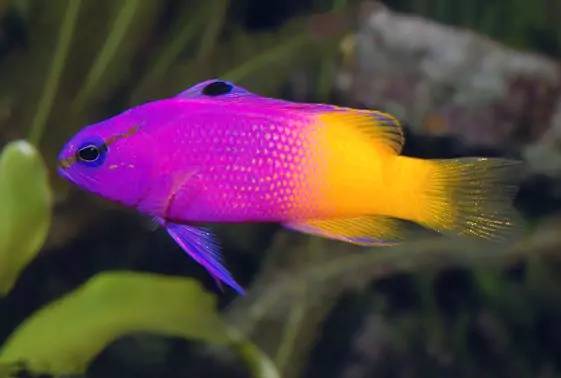
Ideal Tank Conditions for Royal Grammas
- Water Parameters: Maintain stable water parameters within the following ranges: temperature: 72-78°F (22-25°C), pH: 8.1-8.4, salinity: 1.020-1.025, ammonia and nitrite levels at 0 ppm, and nitrate levels below 20 ppm. Ensure proper filtration and regular water changes to uphold water quality.
- Tank Setup: Provide ample hiding spots using live rock formations, caves, and coral structures to mimic their natural habitat. Royal Grammas prefer a well-established aquarium with plenty of hiding places and open swimming areas. Consider adding soft corals or anemones for additional shelter and aesthetic appeal.
By understanding the physical characteristics and behavior of Royal Grammas, as well as their ideal tank conditions, aquarists can create a suitable environment for these captivating fish to thrive. This knowledge forms the foundation for successful care and maintenance of Royal Grammas in a home aquarium setting.
Factors to Consider When Choosing Tank Mates
Size Compatibility
- Selecting tank mates that are similar in size to Royal Grammas is crucial to prevent aggression or predation within the aquarium. Large size disparities may lead to bullying or potential harm to smaller fish, while larger fish may view smaller tank mates as prey.
- When choosing tank mates, opt for species that have comparable adult sizes to Royal Grammas to promote a harmonious environment. This helps minimize competition for resources and reduces the likelihood of conflicts stemming from size differences.
Temperament
- Royal Grammas are renowned for their peaceful nature, making them ideal candidates for community aquariums. It’s essential to choose tank mates with similar temperaments to ensure compatibility and minimize the risk of aggression or territorial disputes.
- Look for species known for their peaceful behavior and compatibility with Royal Grammas. Avoid aggressive or territorial fish that may antagonize or stress out the Royal Grammas, disrupting the tranquility of the aquarium ecosystem.
Dietary Compatibility
- Royal Grammas have an omnivorous diet, consuming a variety of meaty foods, algae, and small crustaceans in the wild. When selecting tank mates, consider their dietary requirements and compatibility with the Royal Grammas’ feeding habits.
- Choose tank mates that share similar dietary preferences and feeding habits to ensure they can coexist peacefully without competing for food resources. Avoid species that may outcompete Royal Grammas for food or those with specialized diets that are incompatible with their omnivorous nature.
By considering factors such as size compatibility, temperament, and dietary preferences when choosing tank mates for Royal Grammas, aquarists can create a cohesive and harmonious community aquarium. This thoughtful approach promotes the well-being of all inhabitants and enhances the overall enjoyment of the aquarium hobby.
Top 5 Compatible Tank Mates for Royal Grammas
Clownfish
- Unique Features and Characteristics: Clownfish are known for their vibrant colors and distinctive markings, including bold stripes and patterns. They have a unique symbiotic relationship with sea anemones, often seeking refuge within their tentacles.
- Reasons for Compatibility: Clownfish share a peaceful temperament with Royal Grammas, making them excellent tank mates. They occupy different areas of the tank, reducing competition for territory. Additionally, their similar size and diet contribute to a harmonious cohabitation within the aquarium environment.
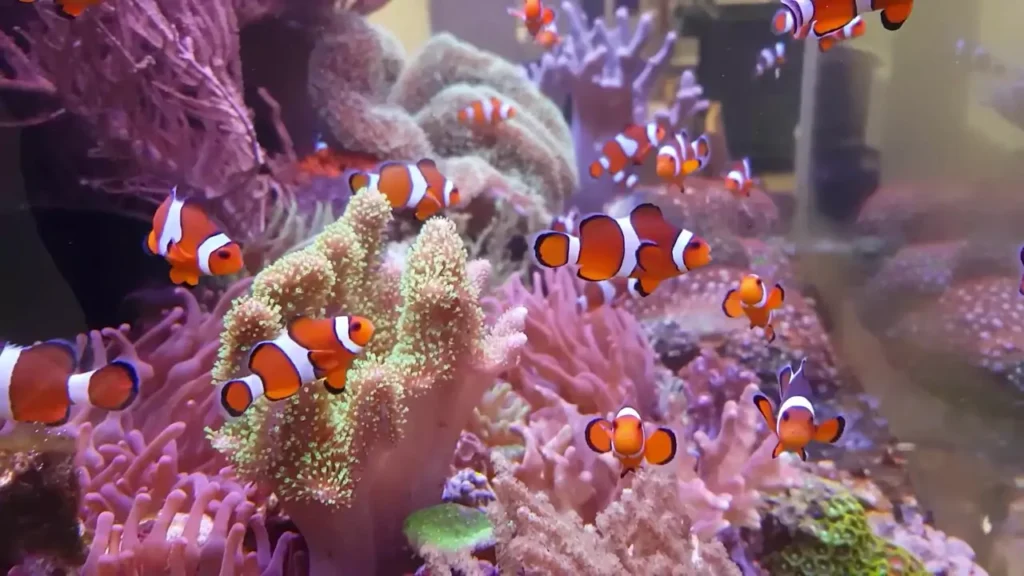
Gobies
- Unique Features and Characteristics: Gobies are characterized by their elongated bodies, often adorned with intricate patterns and colors. Many species exhibit fascinating behaviors such as burrowing in the substrate or forming symbiotic relationships with pistol shrimp.
- Reasons for Compatibility: Gobies are generally peaceful and non-aggressive, making them well-suited companions for Royal Grammas. Their small size and unobtrusive nature ensure minimal conflict within the tank. Furthermore, they contribute to the diversity and activity level of the aquarium community.
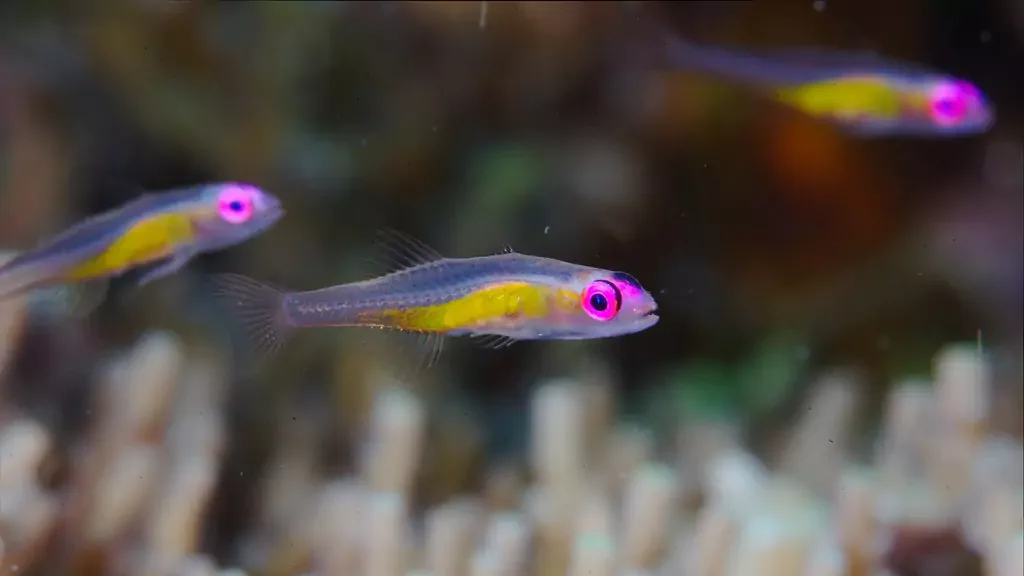
Firefish
- Unique Features and Characteristics: Firefish, also known as Fire Gobies, boast striking coloration, including vibrant hues of red, orange, and yellow. They have elongated bodies and distinctive dorsal fins that add visual interest to any aquarium.
- Reasons for Compatibility: Firefish share similar peaceful temperament with Royal Grammas, making them compatible tank mates. Their graceful swimming behavior and preference for midwater areas complement the bottom-dwelling habits of Royal Grammas, creating a dynamic and visually appealing aquatic environment.
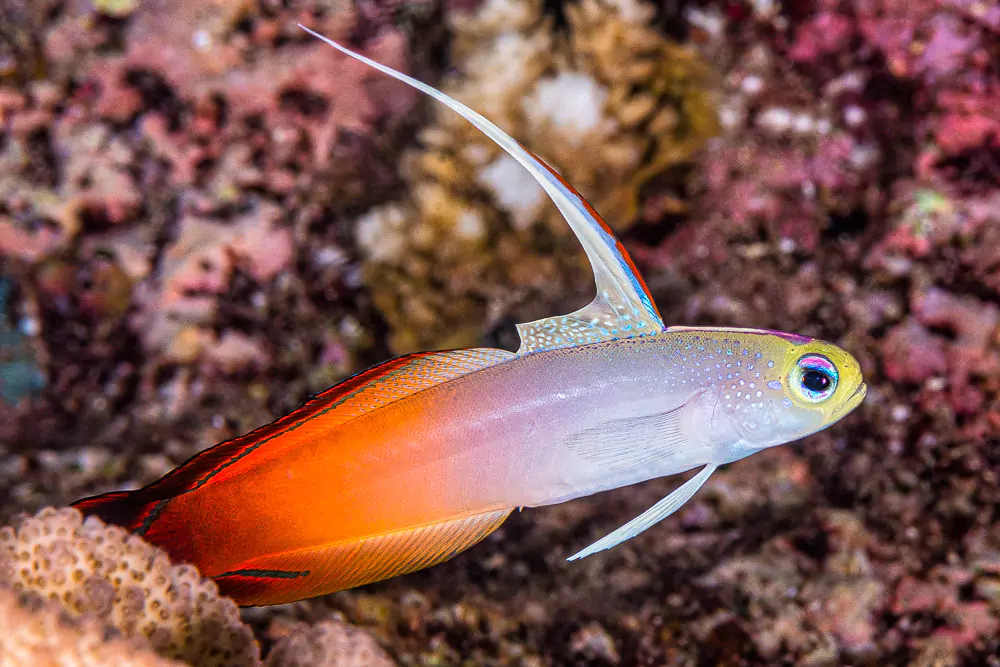
Small Hermit Crabs
- Unique Features and Characteristics: Small hermit crabs are known for their scavenging behavior and hard-shelled bodies, which they use to protect themselves from predators. They play a crucial role in cleaning up excess food and detritus from the aquarium substrate.
- Reasons for Compatibility: Small hermit crabs are unlikely to pose a threat to Royal Grammas due to their small size and peaceful nature. They help maintain water quality by scavenging for food remnants, contributing to a healthier aquarium ecosystem overall.
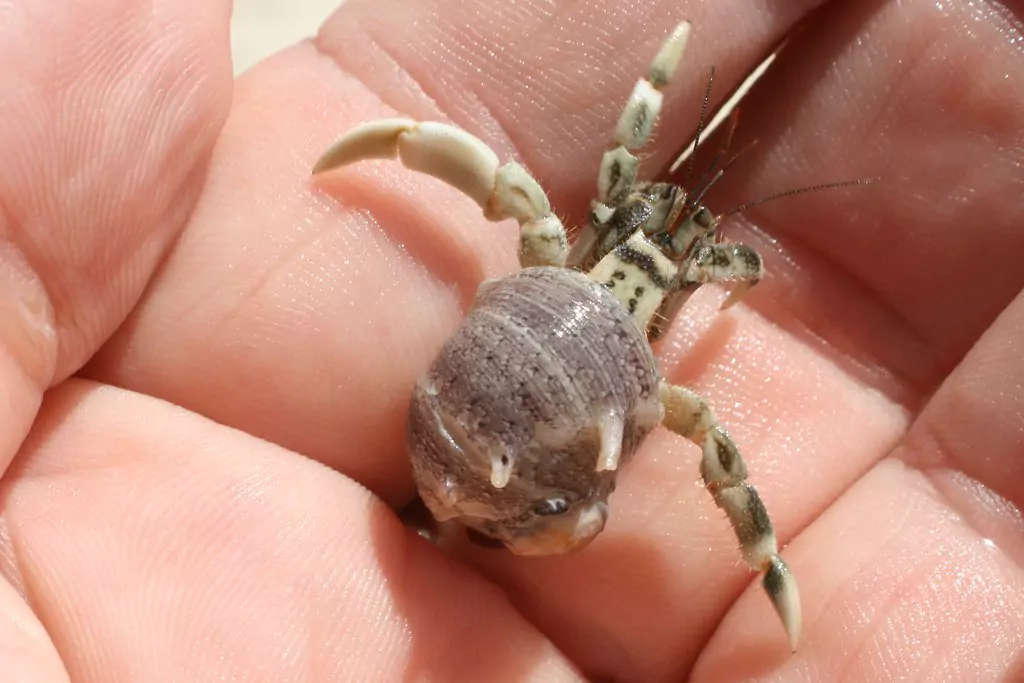
Blennies
- Unique Features and Characteristics: Blennies come in a variety of shapes, sizes, and colors, ranging from slender and elongated to stocky and robust. Many species exhibit interesting behaviors such as perching on rocks, darting in and out of crevices, and even mimicking other fish.
- Reasons for Compatibility: Blennies are generally peaceful and well-suited for life in a community aquarium alongside Royal Grammas. Their bottom-dwelling habits and algae-grazing behavior make them excellent tank mates, as they occupy a different niche within the ecosystem. Additionally, their diverse personalities and appearances add visual interest to the aquarium environment.
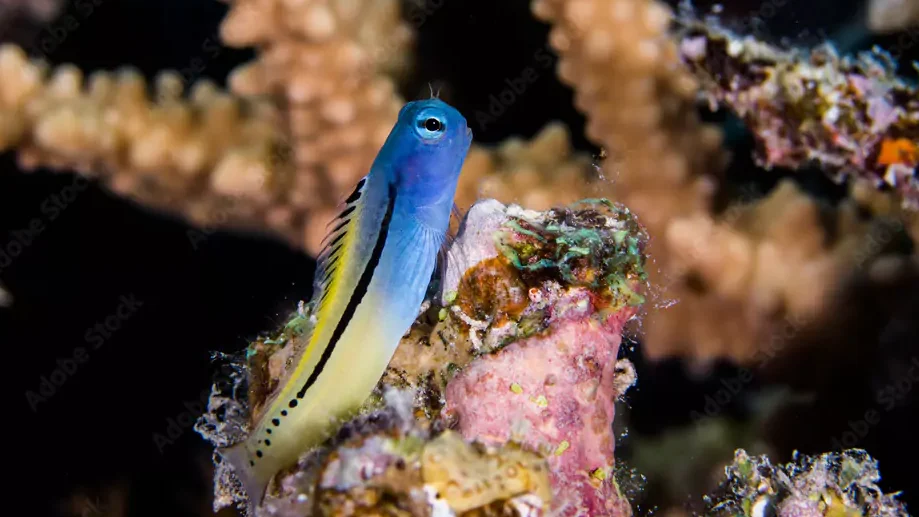
Top 5 Incompatible Tank Mates for Royal Grammas
Angelfish
- Unique Features and Characteristics: Angelfish are known for their distinctive disc-shaped bodies, elongated fins, and vibrant colors, making them popular choices for aquarium enthusiasts. They often display territorial behavior, especially towards fish with similar body shapes or bright colors.
- Reasons for Incompatibility: Angelfish may exhibit aggression towards Royal Grammas due to their territorial nature and potential competition for territory and resources. Additionally, their larger size compared to Royal Grammas could pose a threat, leading to harassment or predation.
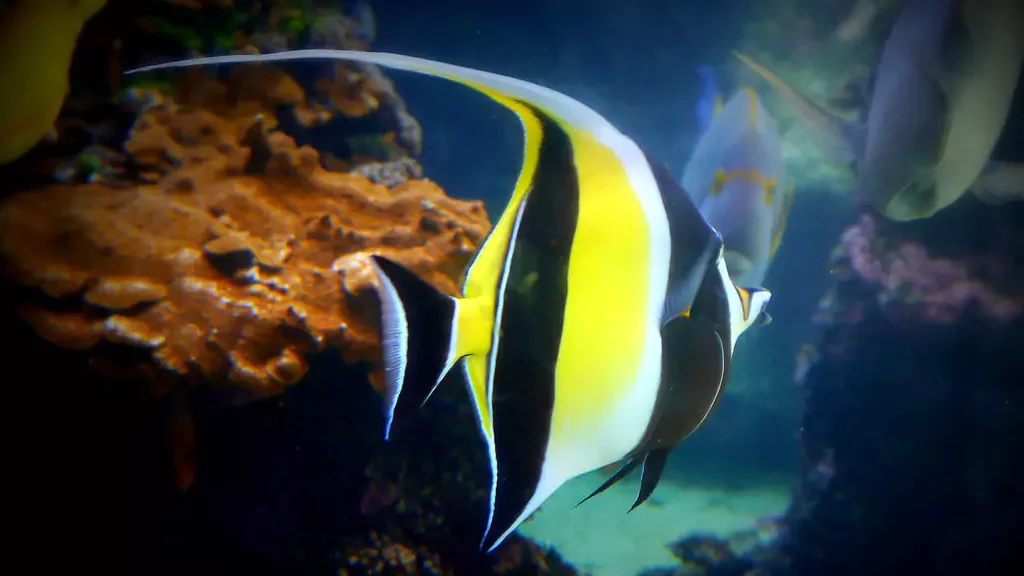
Triggerfish
- Unique Features and Characteristics: Triggerfish are characterized by their robust bodies, strong jaws, and unique dorsal fins that resemble triggers. They are known for their bold personalities and may display aggressive behavior, particularly towards smaller or more passive tank mates.
- Reasons for Incompatibility: Triggerfish are not suitable tank mates for Royal Grammas due to their aggressive tendencies and potential to harass or injure smaller fish. Their large size and territorial behavior make them incompatible companions, posing a risk to the well-being of Royal Grammas.
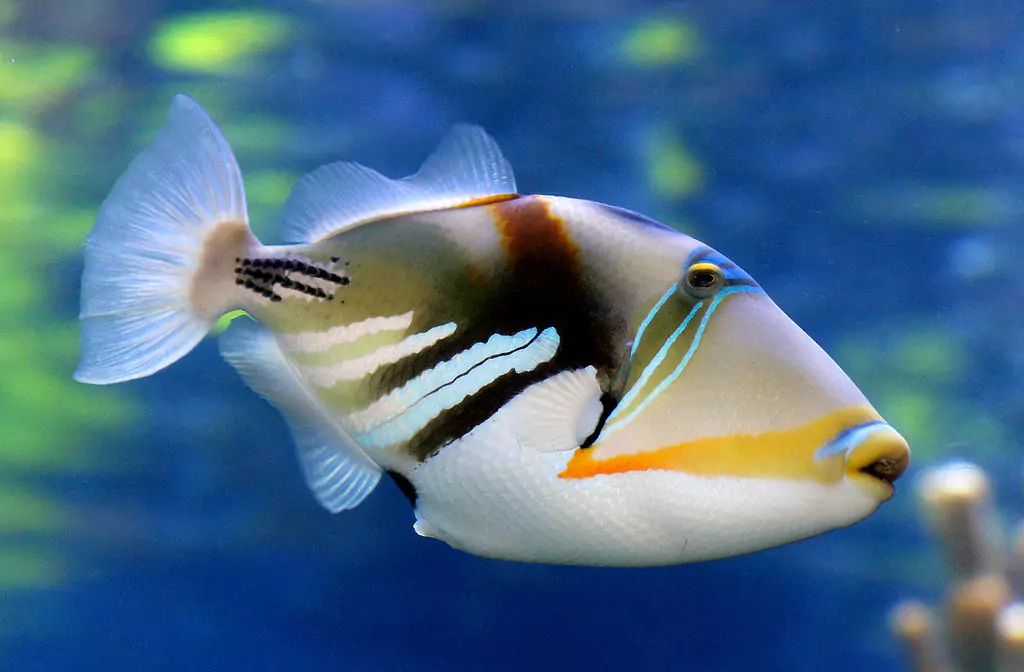
Lionfish
- Unique Features and Characteristics: Lionfish are known for their striking appearance, featuring elongated spines, feathery pectoral fins, and bold patterns. They are predatory fish with voracious appetites, often preying on smaller fish and crustaceans in the aquarium.
- Reasons for Incompatibility: Lionfish are incompatible tank mates for Royal Grammas due to their predatory nature and potential to consume smaller fish, including Royal Grammas. Their aggressive feeding behavior and venomous spines pose a significant threat to the safety and well-being of Royal Grammas.

Moray Eels
- Unique Features and Characteristics: Moray eels are elongated fish with serpentine bodies, powerful jaws, and sharp teeth. They are ambush predators that rely on stealth and camouflage to capture their prey, often hiding in rock crevices or burrows.
- Reasons for Incompatibility: Moray eels are not suitable tank mates for Royal Grammas due to their predatory nature and potential to consume smaller fish. Their large size, aggressive feeding behavior, and territorial tendencies make them incompatible companions, posing a significant threat to the safety of Royal Grammas.
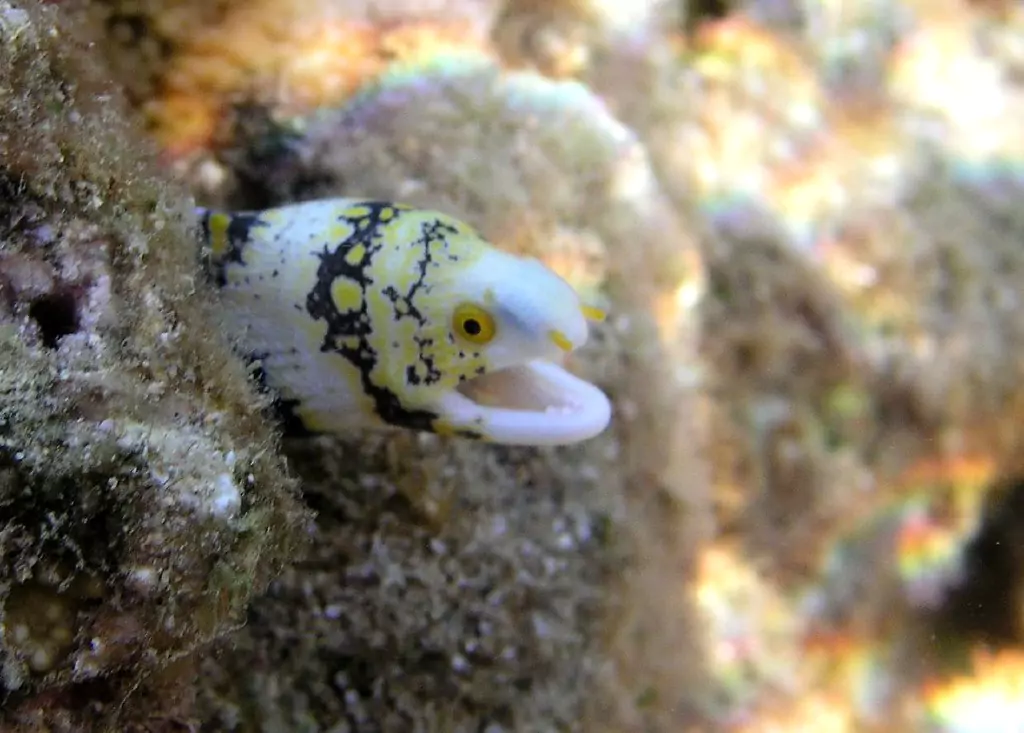
Pufferfish
- Unique Features and Characteristics: Pufferfish are known for their ability to inflate their bodies into a spherical shape when threatened, making them appear larger and more intimidating to predators. They have beak-like mouths and powerful jaws used for crushing shells and hard-shelled prey.
- Reasons for Incompatibility: Pufferfish are incompatible tank mates for Royal Grammas due to their aggressive behavior and potential to harass or injure smaller fish. Additionally, some species of pufferfish produce toxins that can be harmful or even fatal to other tank mates, posing a significant risk to the well-being of Royal Grammas.
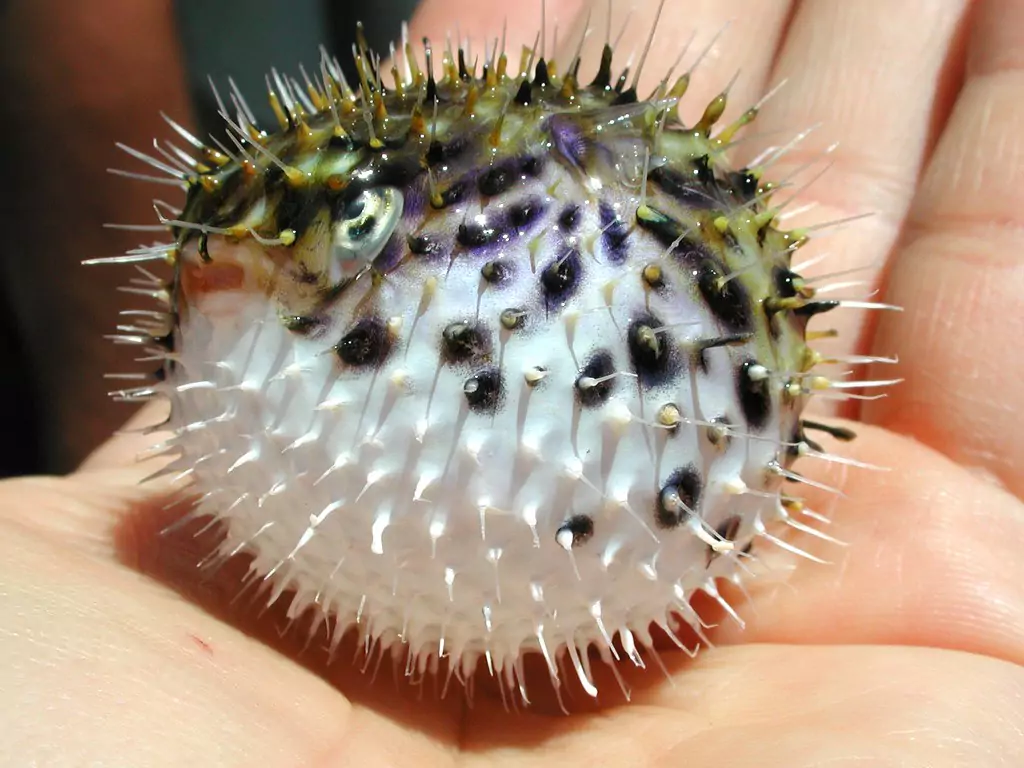
Avoiding incompatible tank mates such as Angelfish, Triggerfish, Lionfish, Moray Eels, and Pufferfish is essential for maintaining a peaceful and thriving aquarium environment for Royal Grammas. By understanding the unique characteristics and behavior of these fish, aquarists can make informed decisions when selecting suitable tank mates to ensure the well-being and safety of their Royal Grammas.
Tips for Introducing Tank Mates
Quarantine New Tank Mates
- Reasoning: Quarantining new tank mates is essential to prevent the introduction of diseases or parasites into the main aquarium. It allows you to observe and treat any health issues in a controlled environment before exposing other fish to potential risks.
- Procedure: Set up a separate quarantine tank with similar water parameters to the main tank. Keep new arrivals isolated for a minimum of two weeks, closely monitoring their behavior and health. Conduct regular water tests and perform appropriate treatments if necessary before introducing them to the main tank.
Use Proper Acclimation Procedures to Reduce Stress
- Reasoning: Sudden changes in water parameters can cause stress and health issues for both existing and new tank mates. Proper acclimation helps fish adjust gradually to their new environment, minimizing stress and potential complications.
- Procedure: Float the bag containing the new fish in the aquarium for about 15-20 minutes to equalize the water temperature. Then, gradually add small amounts of aquarium water to the bag over the course of 30-60 minutes to acclimate the fish to the tank’s water chemistry. Finally, use a net to transfer the fish into the main tank, avoiding any water from the bag.
Monitor Tank Mates Closely After Introduction
- Reasoning: Even with careful selection and acclimation, compatibility issues can still arise among tank mates. Regular monitoring allows you to intervene promptly if any signs of aggression or stress are observed, preventing potential harm to the inhabitants.
- Procedure: Observe the behavior of all tank mates closely for the first few days after introducing new additions. Look for signs of aggression, such as chasing, fin nipping, or territorial disputes. If any conflicts arise, be prepared to temporarily separate or rehome the aggressor to maintain a peaceful tank environment. Additionally, continue to monitor water parameters to ensure optimal conditions for the health and well-being of all aquarium inhabitants.
Conclusion
In conclusion, selecting suitable tank mates for Royal Grammas is crucial for maintaining a thriving and harmonious aquarium ecosystem. By considering factors such as size compatibility, temperament, and dietary needs, aquarists can create a balanced environment where fish coexist peacefully. It’s essential to prioritize thoughtful consideration and research when introducing new companions to ensure the well-being of all inhabitants. We encourage readers to share their own experiences and insights on successful tank mate selection, fostering a community of knowledge and expertise within the hobby. Together, we can create enriching environments for our aquatic companions while enjoying the beauty and wonder of the underwater world.
Additional Resources
Authoritative Books
- Marine Fishes: 500+ Essential-to-Know Aquarium Species by Scott W. Michael: This comprehensive guide covers a wide range of marine fish species, including detailed information on Royal Grammas and their care requirements.
Recommended Products
- API Saltwater Master Test Kit: Ensure optimal water quality for your Royal Grammas and their tank mates with a reliable water test kit.
- AquariumH2o Natural Looking Aquarium Rock: Create a natural and visually appealing environment for your aquarium inhabitants with high-quality live rock, providing hiding places and surfaces for beneficial bacteria.
- Freeze Dried Mysis Shrimp: Sustain the health and vitality of your Royal Grammas with nutritious and species-appropriate fish food options.
Frequently Asked Questions (FAQs)
1. Are Royal Grammas aggressive towards other fish in the tank?
Royal Grammas are generally peaceful fish but may exhibit territorial behavior, especially towards similar-looking species or those that encroach on their space. It’s crucial to provide ample hiding spots and territory boundaries to minimize aggression.
2. Can I keep Royal Grammas with other types of fish in a community tank?
Yes, Royal Grammas can coexist with a variety of tank mates, particularly small, peaceful reef fish such as Clownfish, Gobies, and Firefish. However, it’s essential to research and select compatible species that share similar temperament and habitat preferences.
3. Do Royal Grammas eat other smaller fish in the tank?
While Royal Grammas are carnivorous and may consume small invertebrates and crustaceans, they typically do not pose a threat to other small fish in the tank. However, it’s advisable to avoid keeping Royal Grammas with significantly smaller tank mates to prevent potential predation.
4. How should I introduce new tank mates to an aquarium containing Royal Grammas?
When introducing new tank mates, it’s essential to quarantine them first to prevent the spread of diseases. Additionally, use proper acclimation procedures to minimize stress on both the new arrivals and existing inhabitants. Monitor their behavior closely after introduction to ensure compatibility and prevent aggression.
5. What are some signs of compatibility issues among Royal Grammas and other tank mates?
Signs of compatibility issues may include aggressive behavior such as chasing, fin nipping, or territorial disputes. Additionally, stress-related behaviors such as hiding, loss of appetite, or excessive aggression towards tank mates can indicate compatibility issues. It’s crucial to intervene promptly if any signs of aggression or stress are observed to maintain a harmonious aquarium environment.

